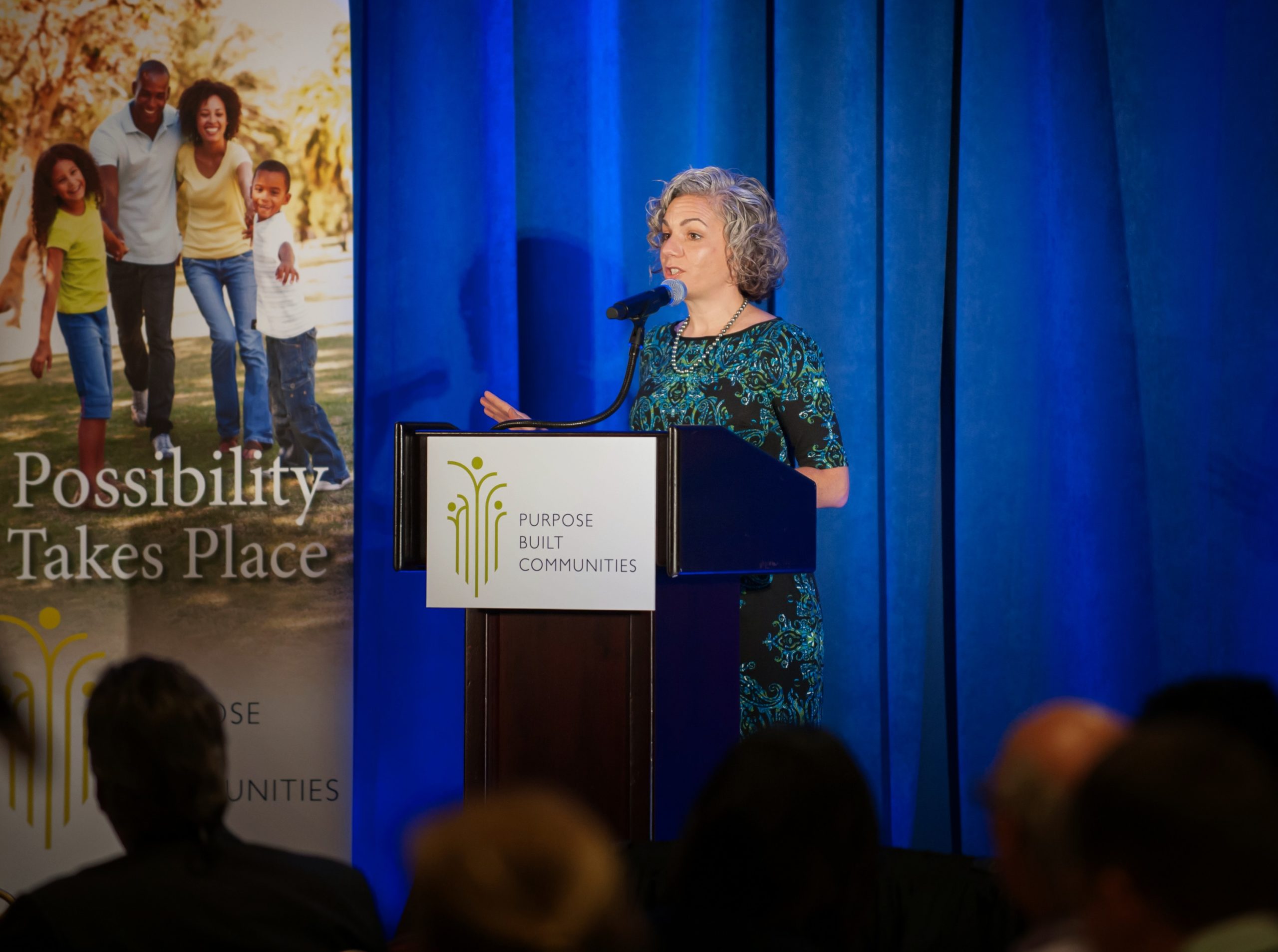The Renaissance West Community Initiative (RWCI), the Purpose Built Community in Charlotte, NC, is making progress on all fronts – housing, education and community wellness. Strong partnerships have been critical to their success, leading to innovative collaborations with the Charlotte Housing Authority (CHA) and the Charlotte-Mecklenburg School District (CMS). We spoke recently with Laura Clark, the Executive Director of RWCI, to learn more about their success.

When did the Renaissance West Community Initiative get started and how did it come about?
Laura Clark (LC): In 2010, the Charlotte Housing Authority received a Hope VI grant that called for the redevelopment of the Boulevard Homes public housing with cradle-to-career education and supportive services. With the $21 million grant in hand, the housing authority realized it needed partners for the education and services component. Ultimately, the housing authority created a new nonprofit, and the Renaissance West Community Initiative was formed for that purpose. RWCI became a Purpose Built Communities network member in late 2012.
What are the biggest challenges facing the initiative?
LC: The biggest challenges are related to capacity – in every way. Staffing, funding, brand awareness. I was a staff of one until recently but now am lucky to have a Director of Programs and a Development Officer on staff. We’ve had to overcome major hurdles in the last 19 months. Fundraising is critical –I am focused on that now.
What are the biggest accomplishments to date?
LC: Philosophically we are doing something holistically and comprehensively so that we’ll see lasting change. We have to look at education, housing, family support and job training, among other things. It’s the first time in Charlotte we acknowledged that we have to do all of it. We negotiated an innovative partnership with the school system that brought $30 million to the table for the Pre K – 8th grade school. We were also fortunate that the housing authority agreed to commit $5 million for operating funds for the childhood development center. We now need to raise money to build it. We are hopeful it will open in 2017. We’re in the process of taking over Care Coordination services for our residents from the housing authority; this will allow us to provide case management in a strengths-based, family-centered way that will lead to great outcomes. We’ve also been really fortunate in the number of other agencies who want to partner with RWCI; Communities in Schools, the YMCA of Greater Charlotte, and the public library, to name a few.
What are the plans for the school?
LC: The Pre K – 8th Grade school is in the design phase, and it is a unique joint venture between CMS and RWCI. Construction should start in 2016. It will have capacity for 800 students. The current neighborhood school is a severely challenged and overcrowded school. The reason we have the $30 million to build the new school is because the voters approved bonds that included funds for a relief school in this area because of overcrowding.
What have been the greatest innovations you have been able to make working with partners?
LC: We were able to get the school system to come to the table in a meaningful way that could serve as a model, which we; we think can be replicated in other schools in Charlotte Other nonprofits in town are recognizing the value of a lead organization, like RWCI, whose role it is to think about partnerships and how everything needs to work together – it makes a difference.
We’re talking with the YMCA of Greater Charlotte right now – we are interested in bringing a variety of Y programs to Renaissance, including the possibility of the Y serving as the child development center operator. The Y is an example of the kind of agency we want to partner with; our missions are aligned, their organization is committed to the west side of Charlotte, and they have experience working in communities. We are always thinking about how to leverage resources and partnerships. For the school system, the benefit for them is that they see the challenges our kids and families face and recognize they cannot solve the problems by themselves. With RWCI as a partner, they can call my team to help solve for some of those things and hold RWCI accountable for those outcomes.
Where do you see the neighborhood in five years? 10 years?
LC: Within five years I hope we have a thriving neighborhood that includes a high-quality child development center, a great school, and mixed-income housing that draws residents from all over our city. Ten years from now my hope is that this has spurred further development in this area of town, not just constrained to our 41 acres.
What piece of advice would you share with others doing this type of work?
LC: How do you eat an elephant? One bite at a time. Slog through the daily work while keeping your eye on the long term goal. It definitely helps to have a network of people across the country to turn to for guidance; Spartanburg has been particularly helpful. Also- you have to go with your gut and you know your community best.
Place-based work gives us a platform to have a conversation in this community we would not otherwise have. This has given me the ability to say we have to think about this comprehensively – education, place, job training, race, everything – and explain why.
What keeps me going every day is the people. For example, RWCI has been working with a young mother who lives at Renaissance. As I listened to her story, I realized she has had to deal with all of the things we know can get people off track from achieving their goals. Because she did not have the support, an unintended pregnancy took her off her original track of finishing college. In my life, it would not have set me back the same way. When you have very fragile families, just one thing can throw your life into disarray. A broken down car can lead to losing a job, etc. Her story underscores for me why this work is so important. She is 21 years old, her life is not over, and we can’t give up on her or her little girl.



